First, many thanks to all for the collective wisdom and inspiration from the 35mmc community coming out of part 1 of this informal survey of b&w film. What started as a a friendly chat with Hamish about which black & white stock to buy in bulk before the tariffs kick in has become a bit of a fun jump down a rabbit hole to try out a wide range of the more readily available b&w stocks to learn the qualities, virtues and shortcomings of the different brands & emulsions. Far from settling on a single ‘go to’ film stock, I’ve been enjoying almost all of them! I’m also having fun shooting in a new environment back on the East Coast and being home with my family, including Nico, our Cavalier King Charles.
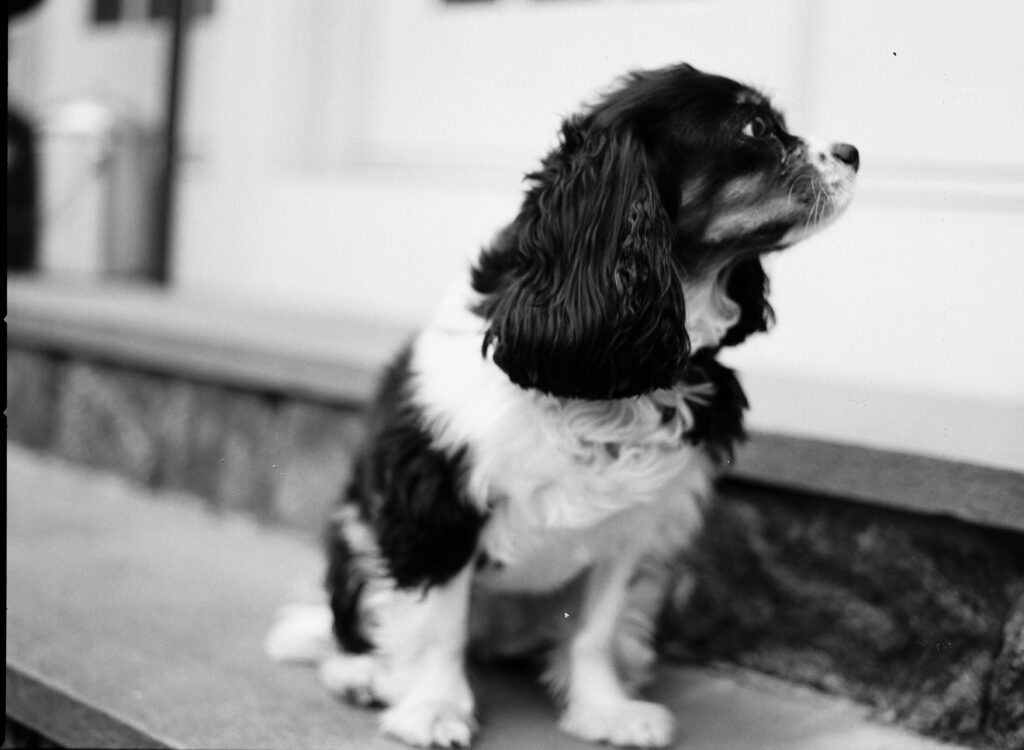
I have to say I’ve been really impressed with the Rollei films on this journey through the photography store’s refrigerators. Rollei Ortho 25 Plus is, to me, a great looking stock with very fine grain and nice contrast and a ‘classic’ feel. With an ISO of 25, it’s definitely not an every day choice, but I really like it when there’s enough light, especially when you can shoot handheld, like the portrait of Nico, as well as this one of a magnolia tree blossom in our garden.
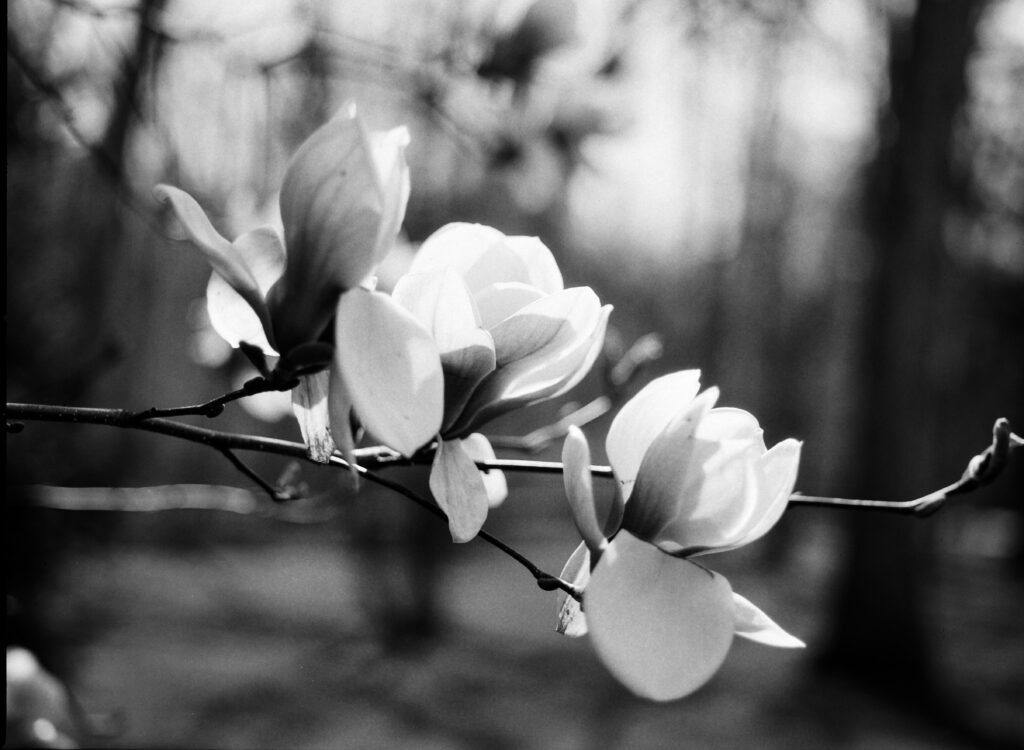
Ortho 25 Plus would be like a great option for a bright sunny day, or when you can shoot on sticks, like landscapes or perhaps an outdoor sculpture. I am finding that my new passion for still photography is taking me to places that I’ve never been to before in an ongoing quest for interesting things to shoot, such as the Donald Kendall Sculpture Garden at the Pepsi headquarters in Purchase, NY.
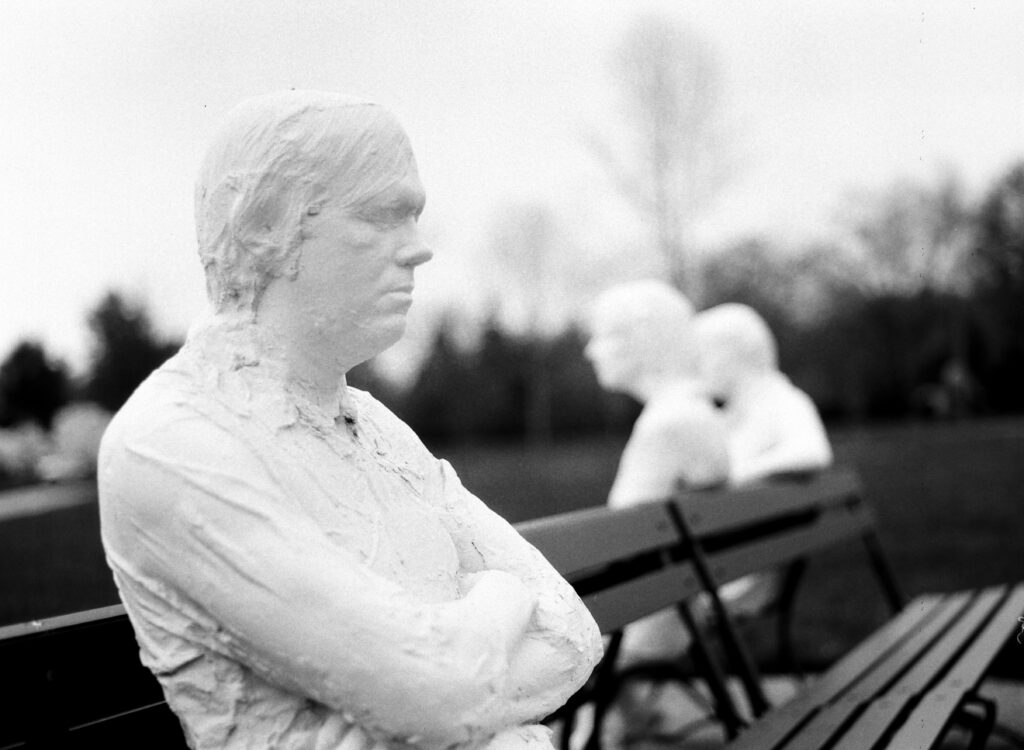
George Segal’s Three People on Four Benches were patient while I swapped out film backs on the Hasselblad to see how different film emulsions performed. On a side note, with its interchangeable film backs, the Hasselblad is a brilliant camera for testing out how different films perform. Swapping from the 645 back with Ortho 25 to a 6×6 back loaded with Agfa Copex Rapid 50 creates a dramatically different feel with the same subject in identical lighting. The green shades of the lawn and trees are going almost full black and it has generally darker shadows and higher contrast.
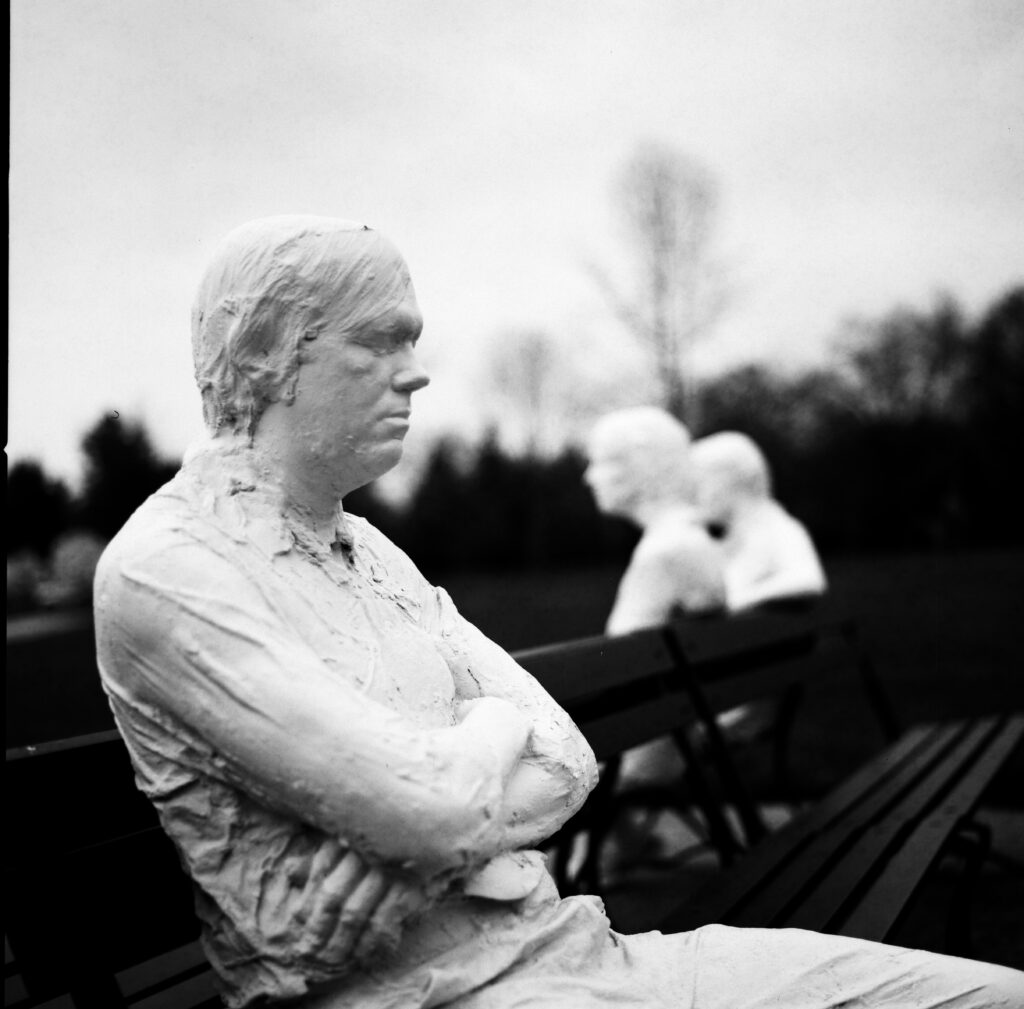
Agfa Copex Rapid, only available in 120 as far as I can tell, has personality to spare. For me it feels like it’s more ‘expressionistic’ than many of the more conventional stocks I’ve tried. I definitely think it could be fun to use Copex Rapid for the right project.
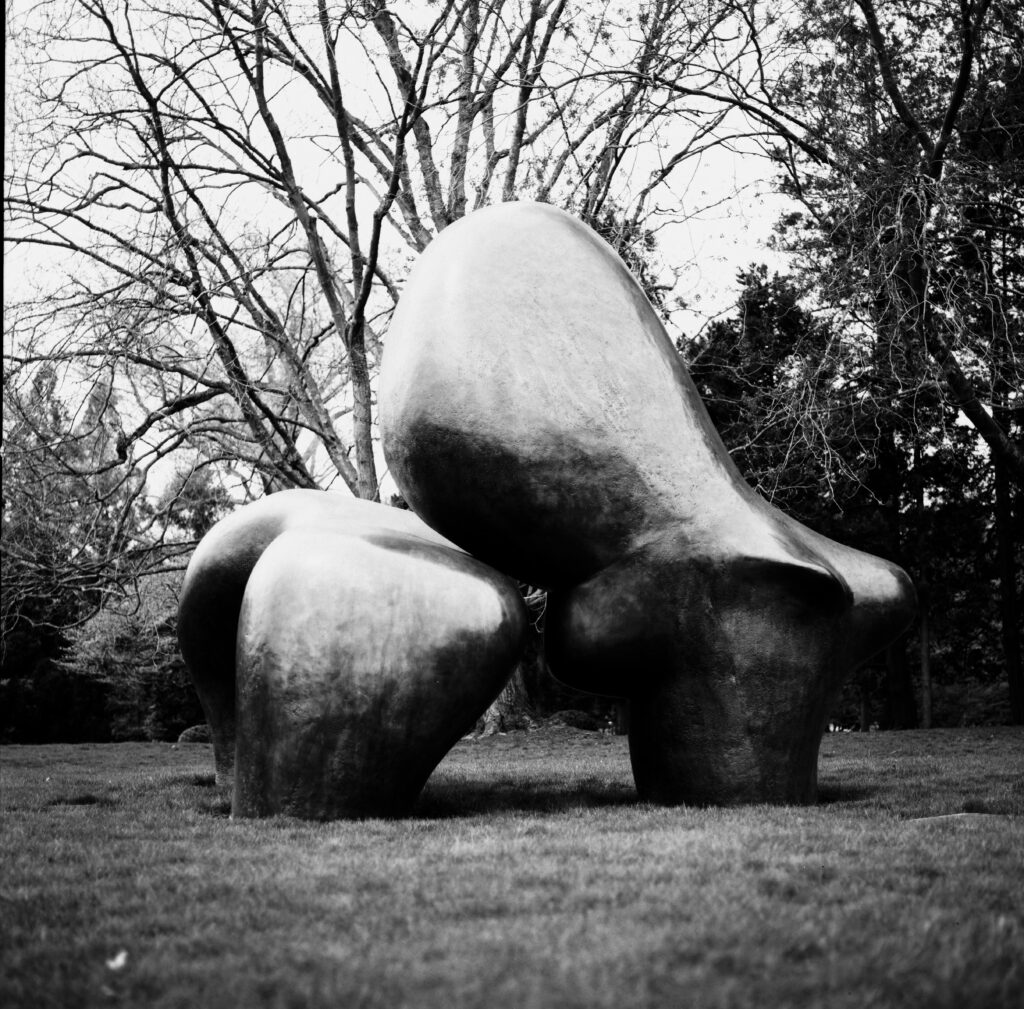
This Henry Moore installation has a dramatically different look and feel when I switch film backs. On Agfa Copex Rapid, I’m getting a bit of a David Lynch or ‘Alien’ movie vibe, a sense of pulsating menace, like the larger biomorphic mass might devour or absorb the smaller one. Whereas on Delta 400, taken moments later in exactly the same conditions, I’m feeling a sense of calm, like a mother nuzzling her child. When I looked up the title of this installation, “Sheep Piece” I decided the latter was closer to Henry Moore’s intention.

Even the grass feels more relaxed on Delta 400, like I’d have a nice dream if I lay down on the beautiful lawn and fell asleep, in contrast with the darker visions that might come if I fell asleep in an Agfa Copex Rapid world.
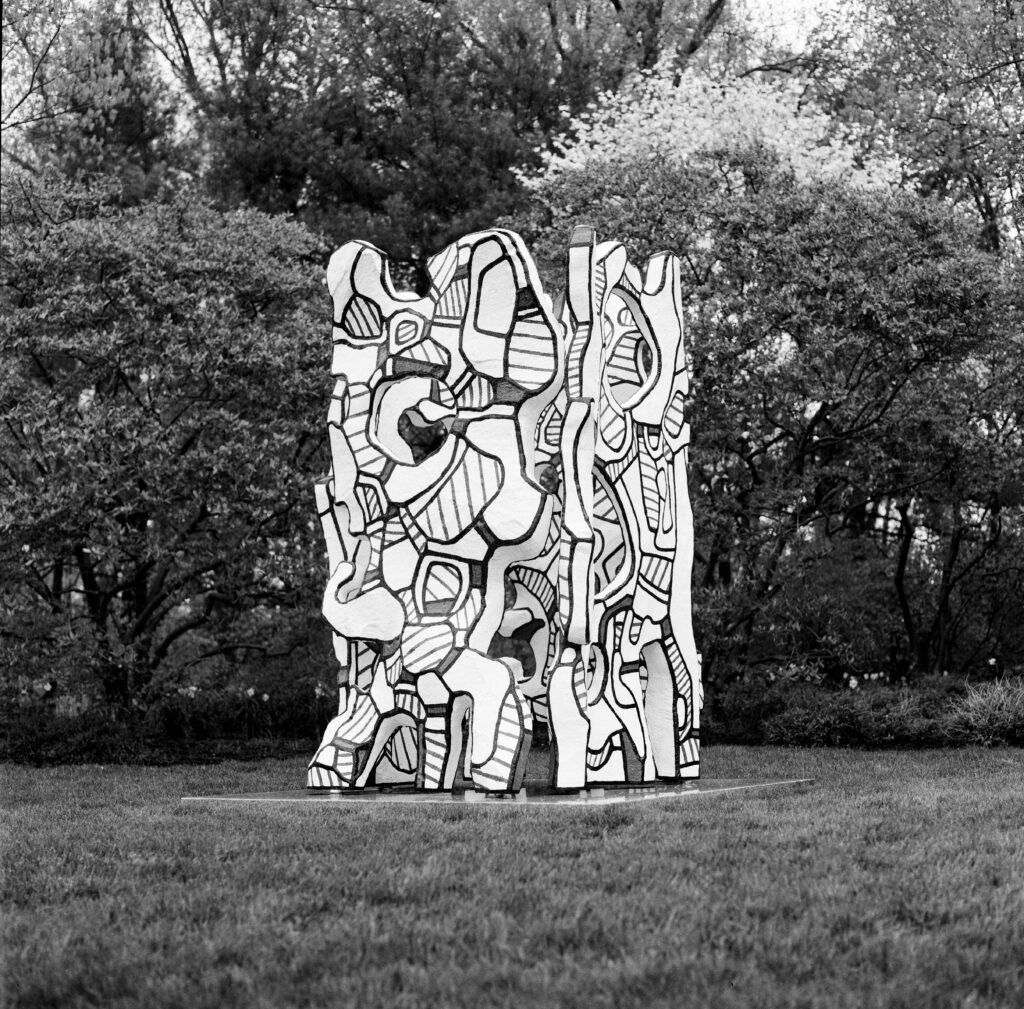
I think Delta 400 is very impressive and really like its look for a 400 ISO b&w stock.
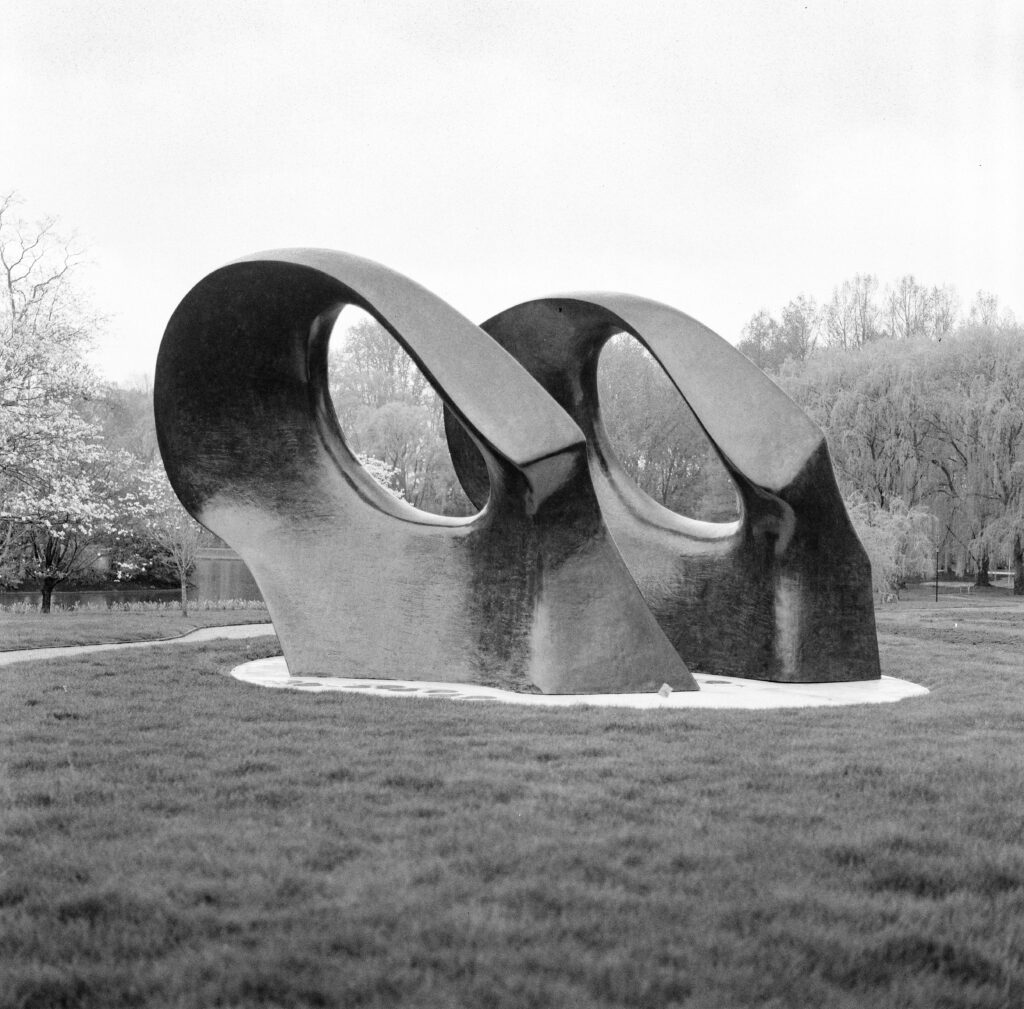
I also tried out Rollei RPX 400 at the Kendall Sculpture Garden. I think it’s a good option and is currently a little less $ than Delta 400 so might be worth a look for a good balance of quality and budget.
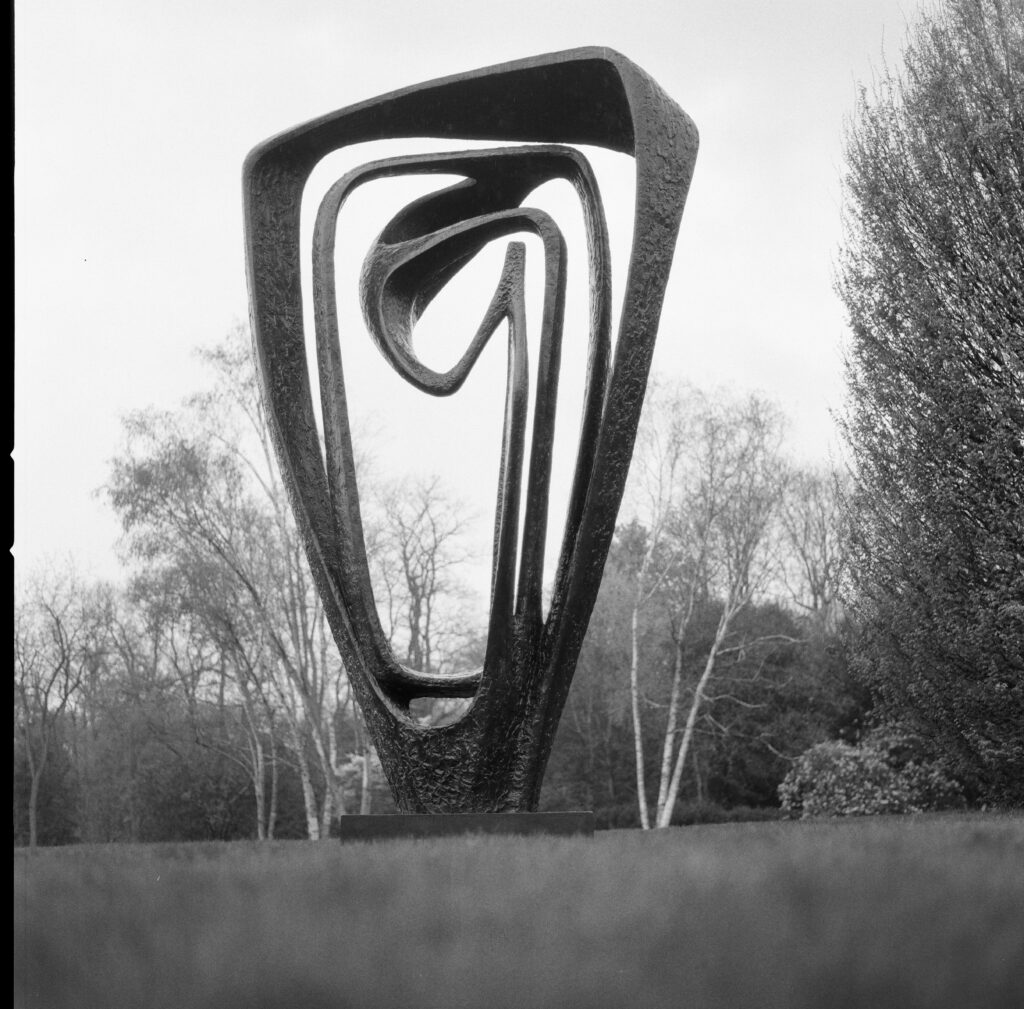
There was an intermittent drizzle that day and I learned that a Hasselblad is not the most user-friendly camera in the rain. Trying to keep everything dry while swapping backs was a chore, but even more problematic was that the waist level finder is prone to taking on water and became more or less unusable as water started to seep into the tiny grooves on the underside of the acute matte focusing screen and making it impossible see through. So that day ended early, but not without getting a few photos for my trouble. I ended up disassembling the Hasselblad and the various film backs to let everything dry out overnight. Next time I want to shoot on a rainy day, I’ll probably either use the prism finder, or more likely the Leica M3 — if they could survive the jungles of Vietnam they should be able to deal with a little rain in NYC.
On that note, I also tried some street shooting on RPX 400 one afternoon walking down Fifth Avenue in NYC with the Leica.
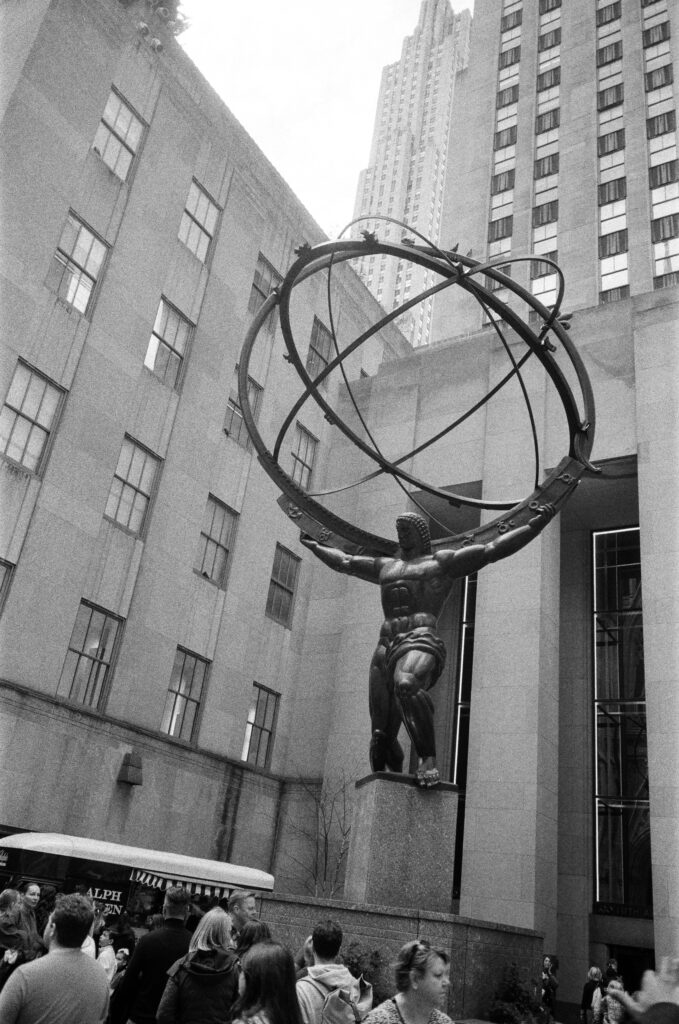
On 35mm I notice the grain a little, but feels like it’s in the same general ‘zip code’ as HP5 and Tri-X.
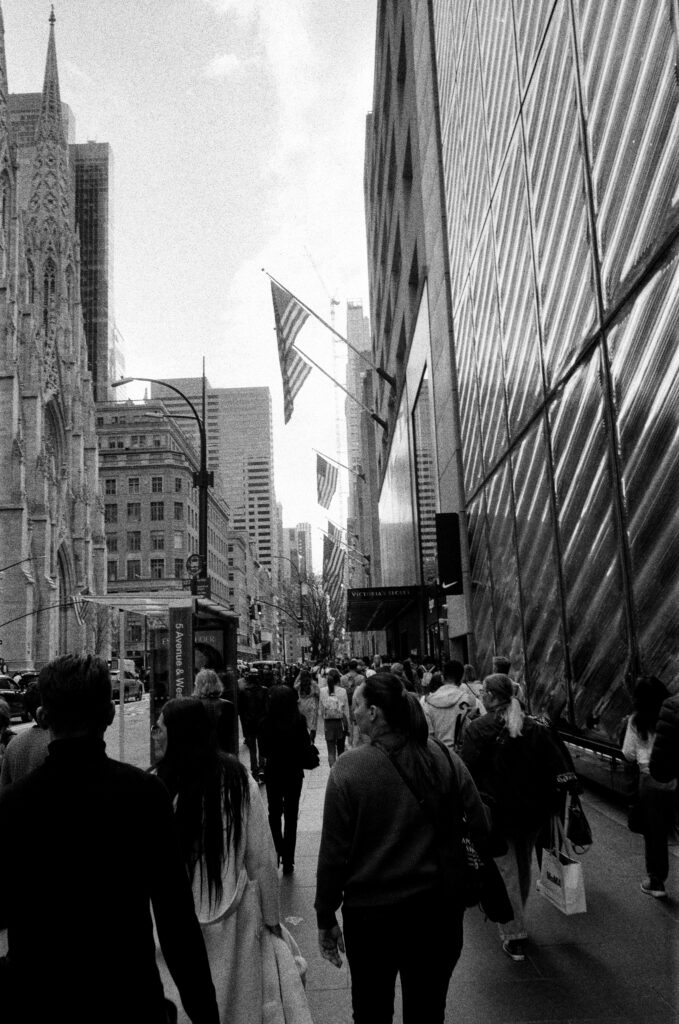
As I went deeper down the rabbit hole, I began trying out more and more stocks to expand my search. I tried a roll of Kodak TMax 400 on the Leica.

I like the level of contrast and to my eye, it has pretty fine grain for a 400 ISO 35mm film.

TMax 400 feels super solid and reliable and capable of very nice results.
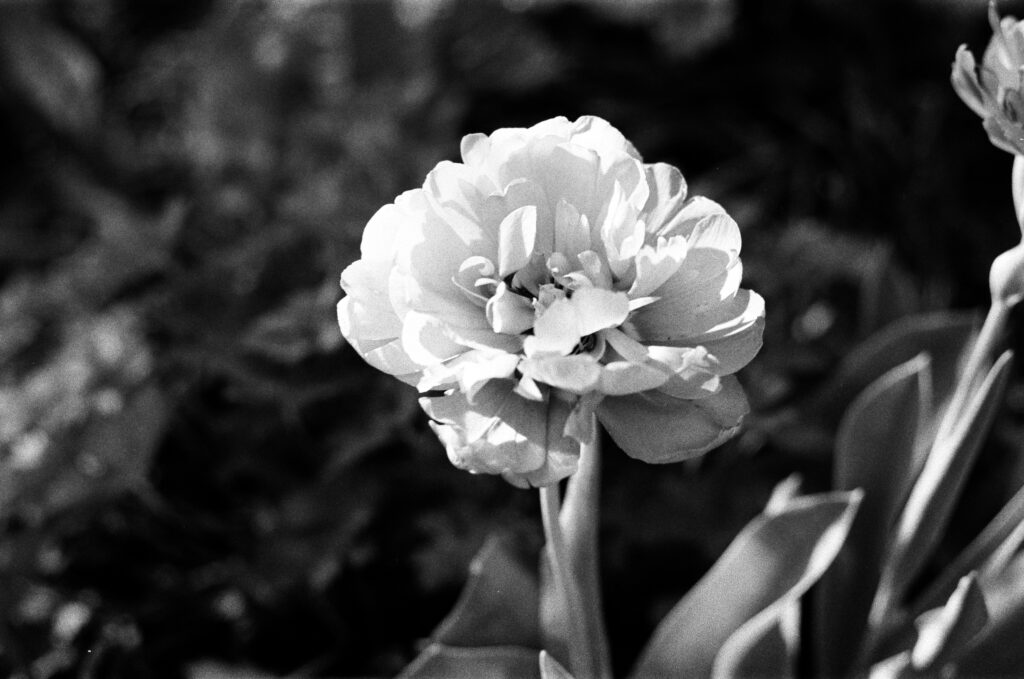
Another spot I’ve ‘discovered’ with my cameras is Untermyer Garden, a lovely gem of a public park that was gifted to the City of Yonkers by Samuel Untermyer, an early 20th century lawyer who advocated for corporate reform, regulation of the stock market and other Progressive goals while managing to do very well for himself. On this evening I wasn’t the only person there taking photos, but probably the only one shooting medium format film, in this case Ilford FP4.
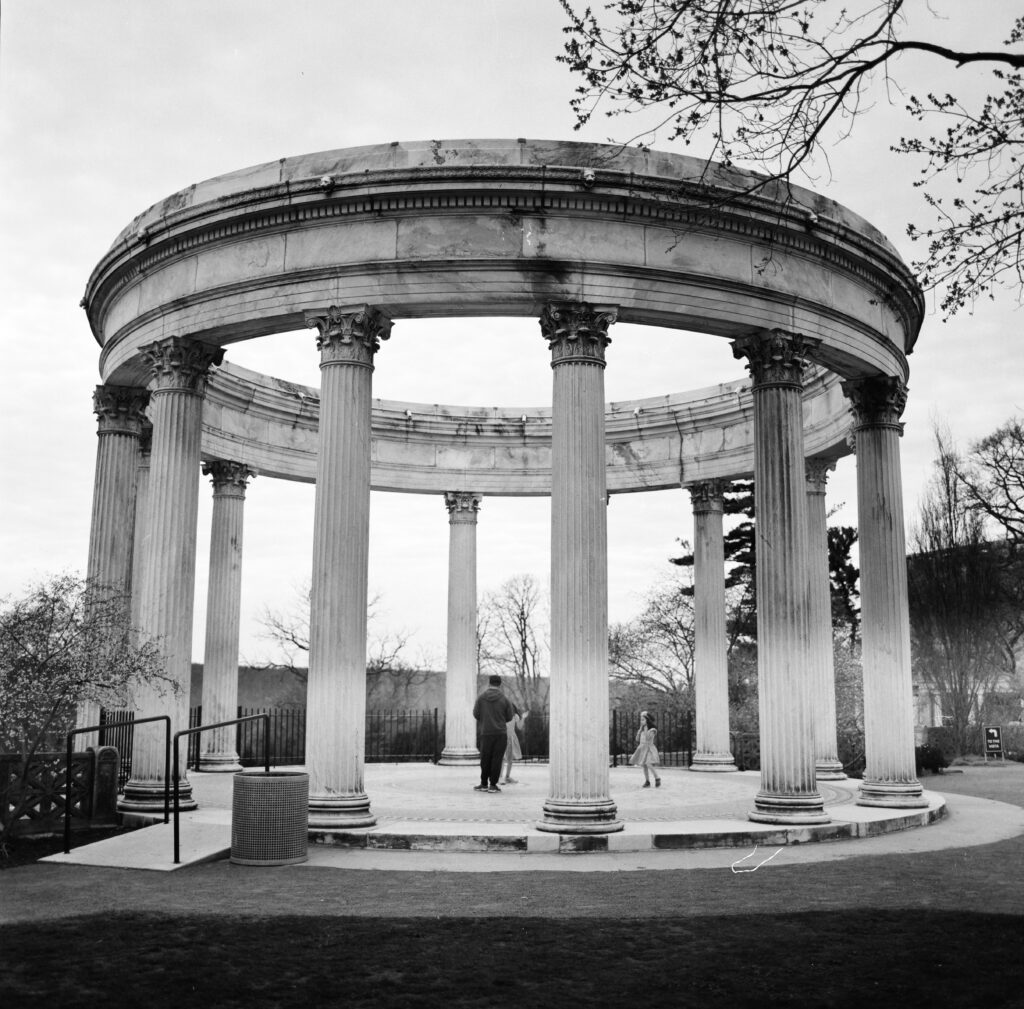
With its classical Greek and Persian elements, Untermyer’s Walled Garden feels a bit like a ‘folly’, ornamental faux ruins that wealthy English and French aristocrats built in the 18th and 19th century to give interest to the landscapes of their sprawling estates.
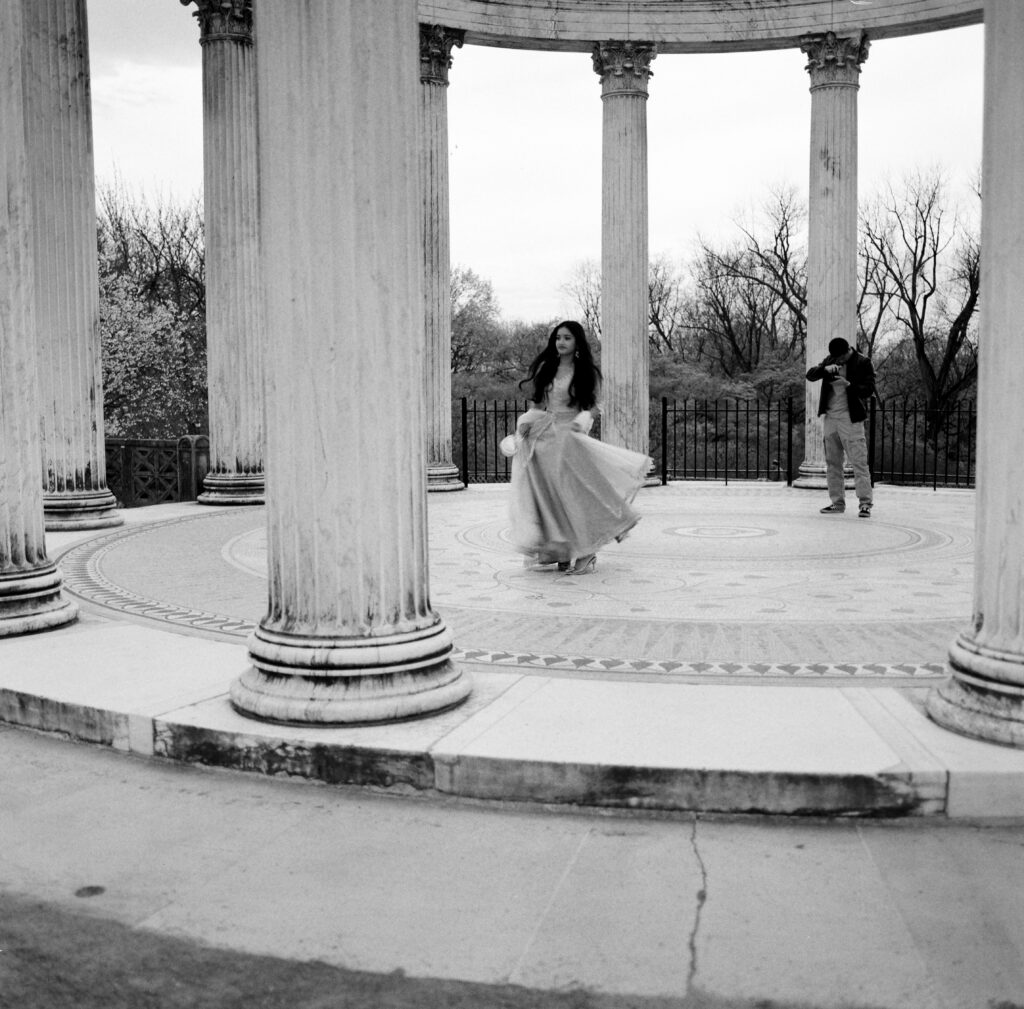

I also tried some Rollei Retro 400S.
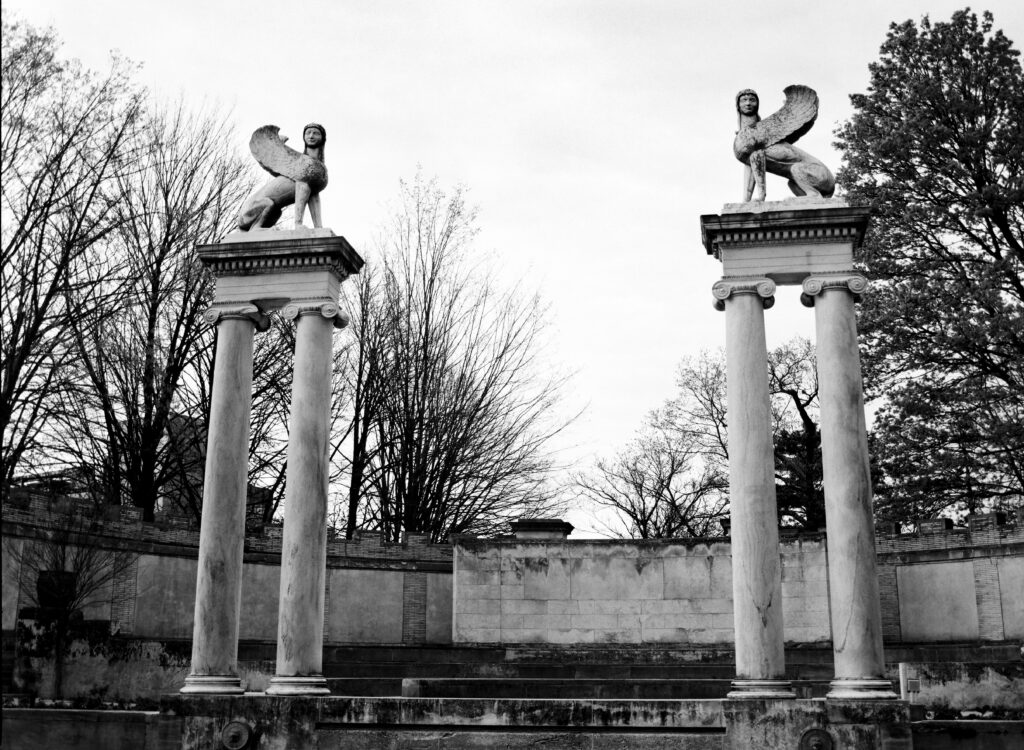
While I was there, I met a very nice professional photographer who was shooting a young woman celebrating her Quincenaera. He loved that I had a Hasselblad and we compared notes a couple of times and I grabbed a shot or two of them commemorating an important rite of passage with an appropriate amount of fanfare.
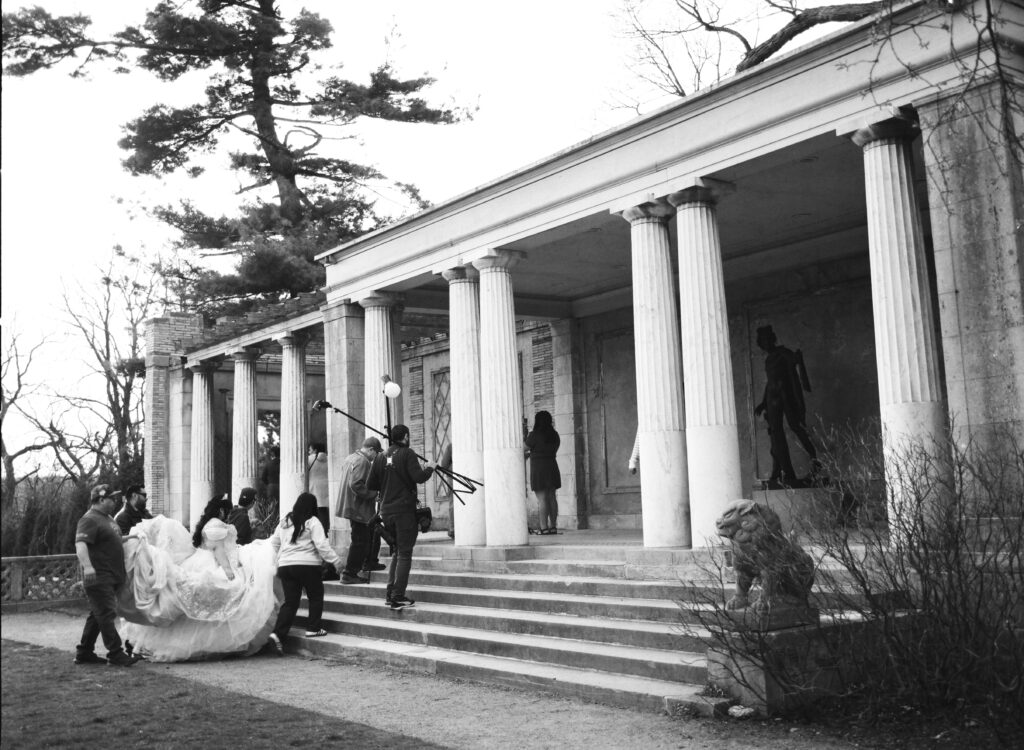
A very different, but favorite area to photowalk is Red Hook, Brooklyn and its somewhat decayed industrial waterfront including the Grain Terminal (seen in part 1 shot on another day from another angle and in a recent “One Shot” story of David Pauley’s). Here I’m shooting it on Rollei 200 Superpan.
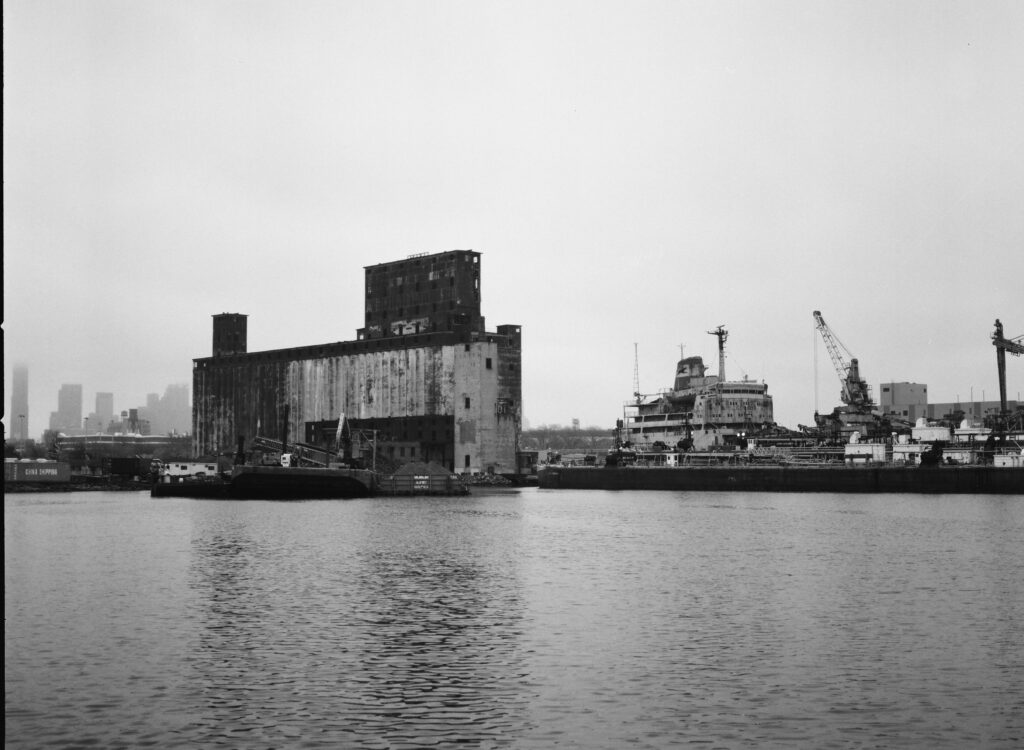
A friendly dockworker was interested in the Hasselblad and struck an interesting pose for me.
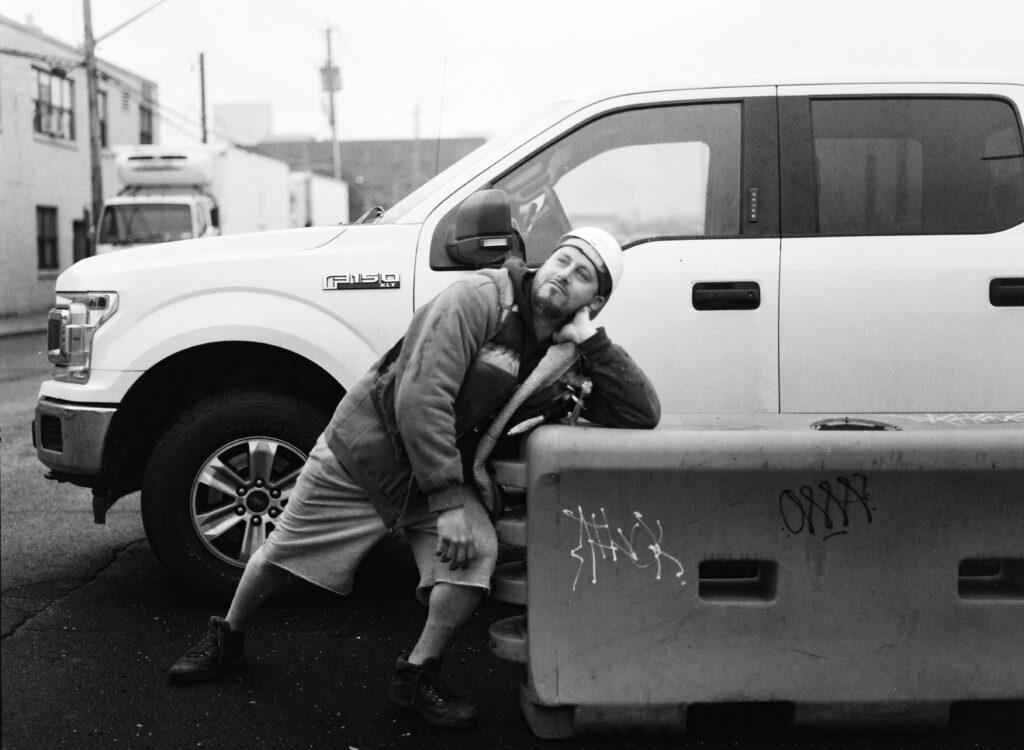
One of our ‘go to’ family outings is the Rockefeller Preserve, and Blue Hill at Stone Barns, a food foundation and high end restaurant on the site of the Rockefeller family’s former dairy farm that supplied their estate nearby. I’ve been taking photos there for a few years and in many different weather conditions. It’s always a lovely outing, seen here on Rollei Superpan 200.
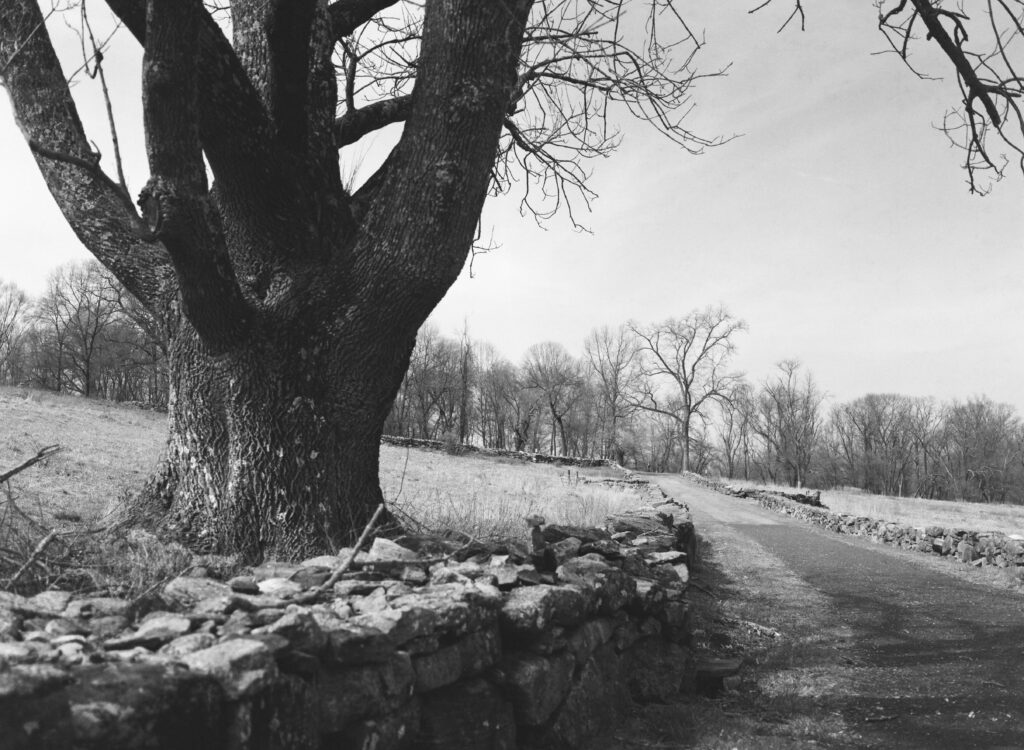
I also tried out an older roll of Ilford Delta 3200 at the Rockefeller preserve, which had an interesting slightly faded look. One possible wild card with that particular roll of 3200 is that it went to Canada and back in an airplane, so there might be some light fogging issues due to going through security X-ray machines.
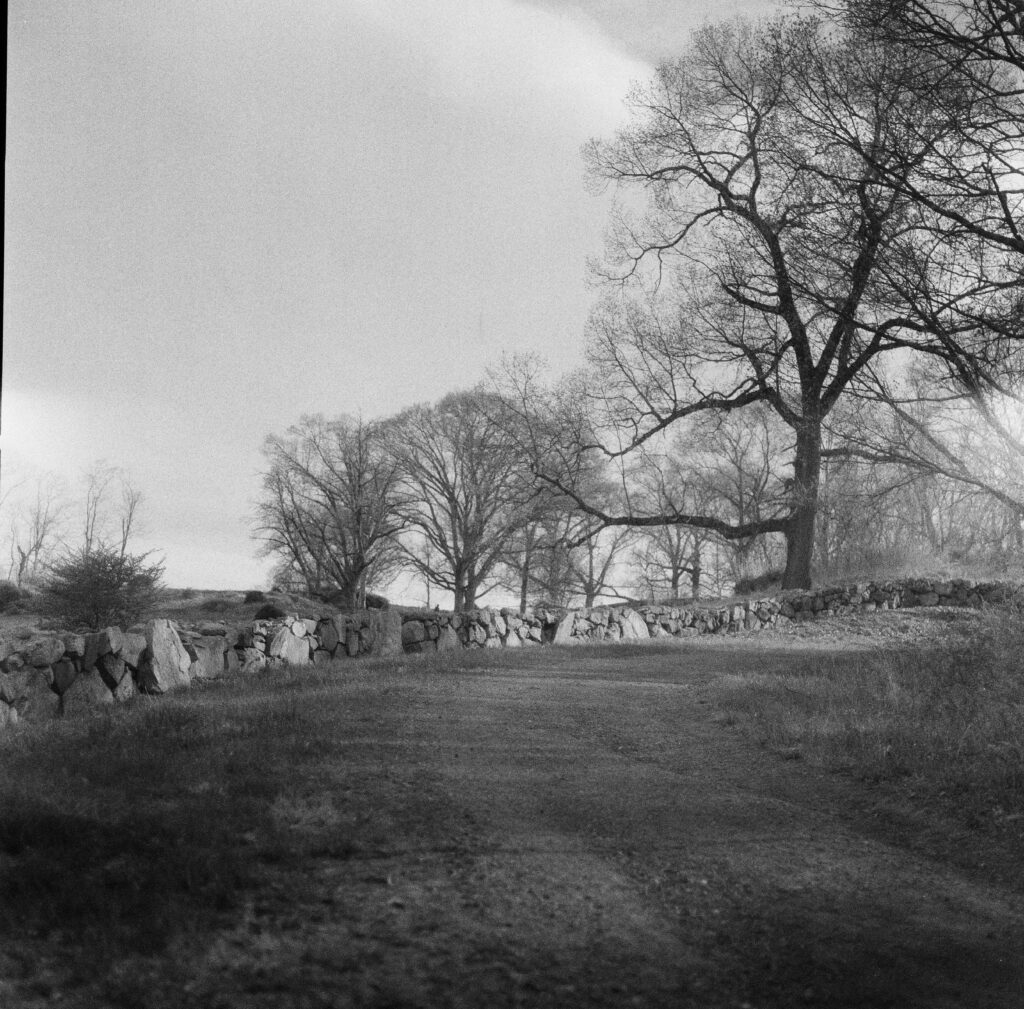
But I kind of like the mood and look of it. These shots feel almost like something you might see in a 1930’s John Ford movie.
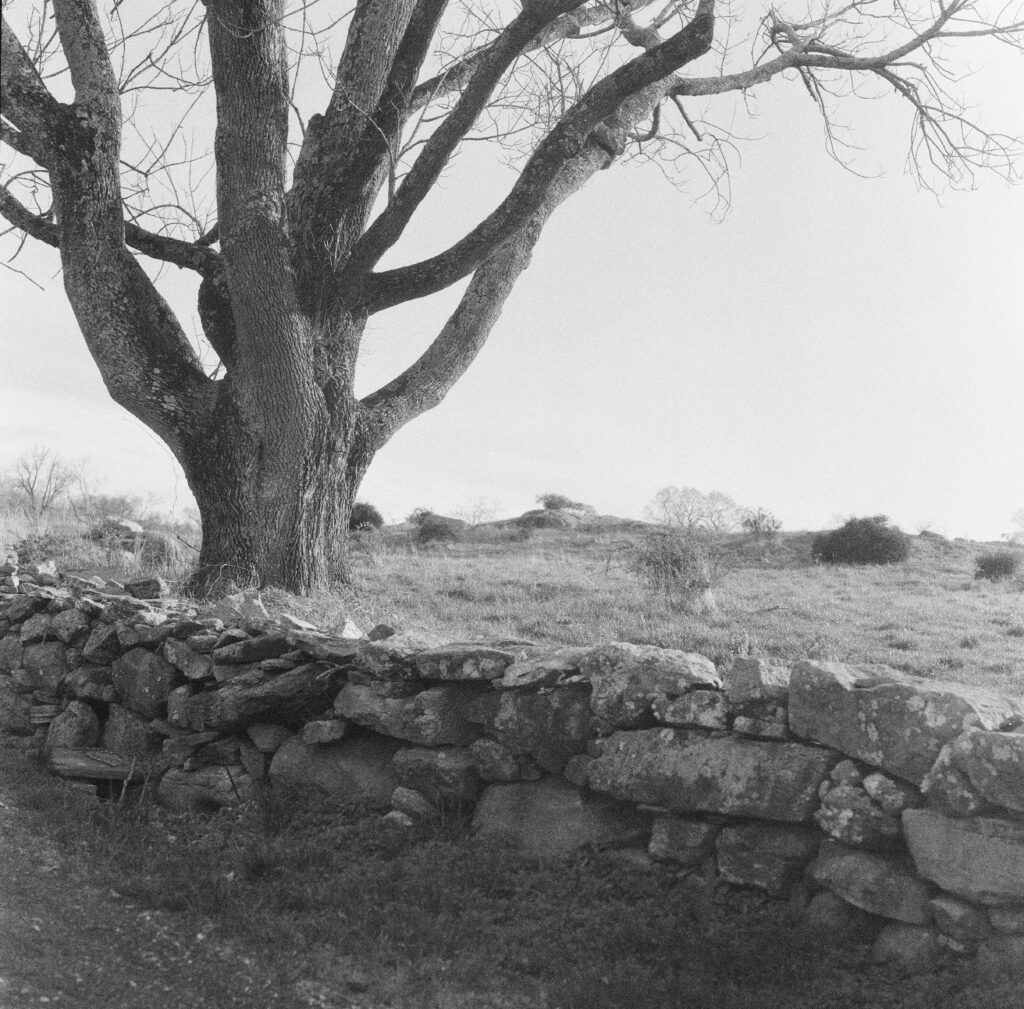
Another single roll I had in the fridge was Ilford Ortho Plus. Hamish encouraged me to try out Ortho, so I loaded it one day when I went out to the Rockefeller Preserve.
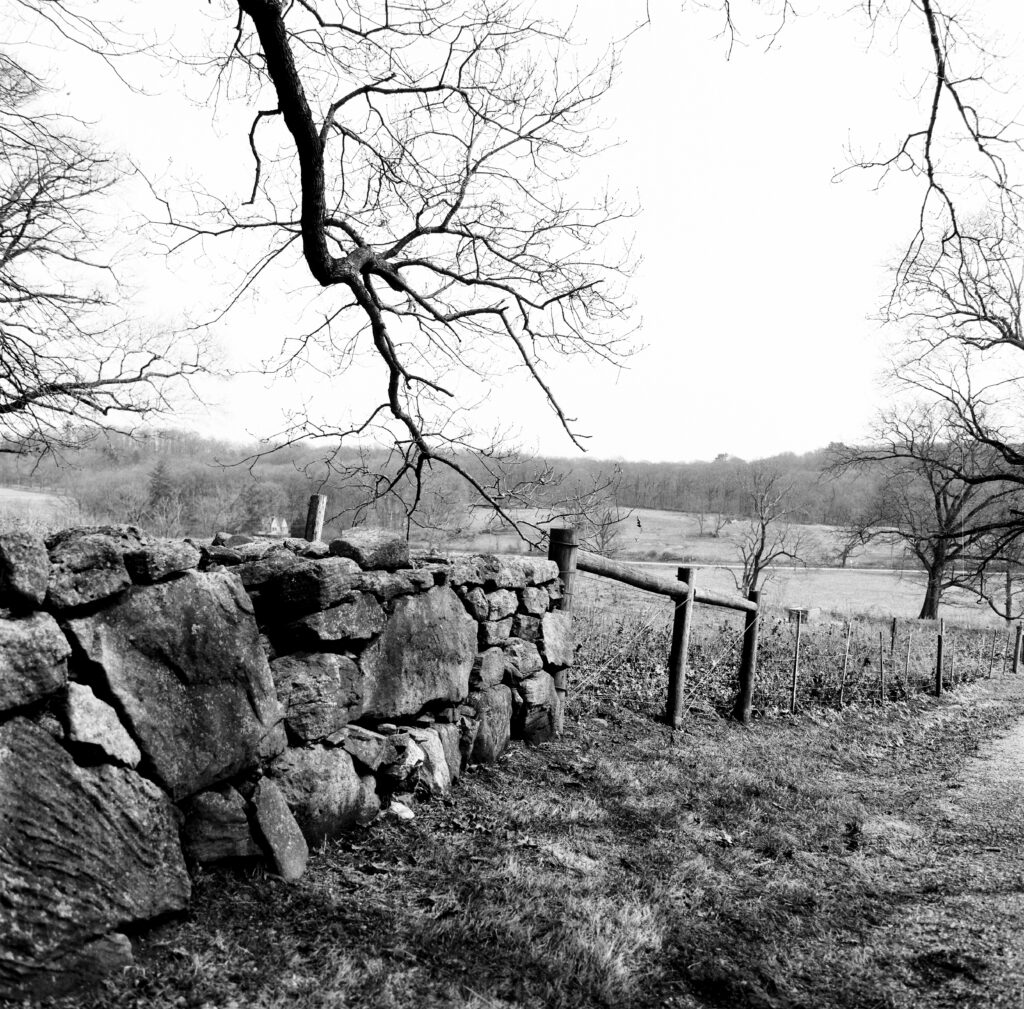
I was blown away by the results of that roll. While I still have to learn the technical aspects of Ortho emulsions, I’ve really liked the results on both Rollei and Ilford and definitely want to shoot more. This roll of Ortho Plus scores high on so many fronts for me — really nice detail and grain structure, great contrast, and enough personality to make things interesting but not overwhelming.
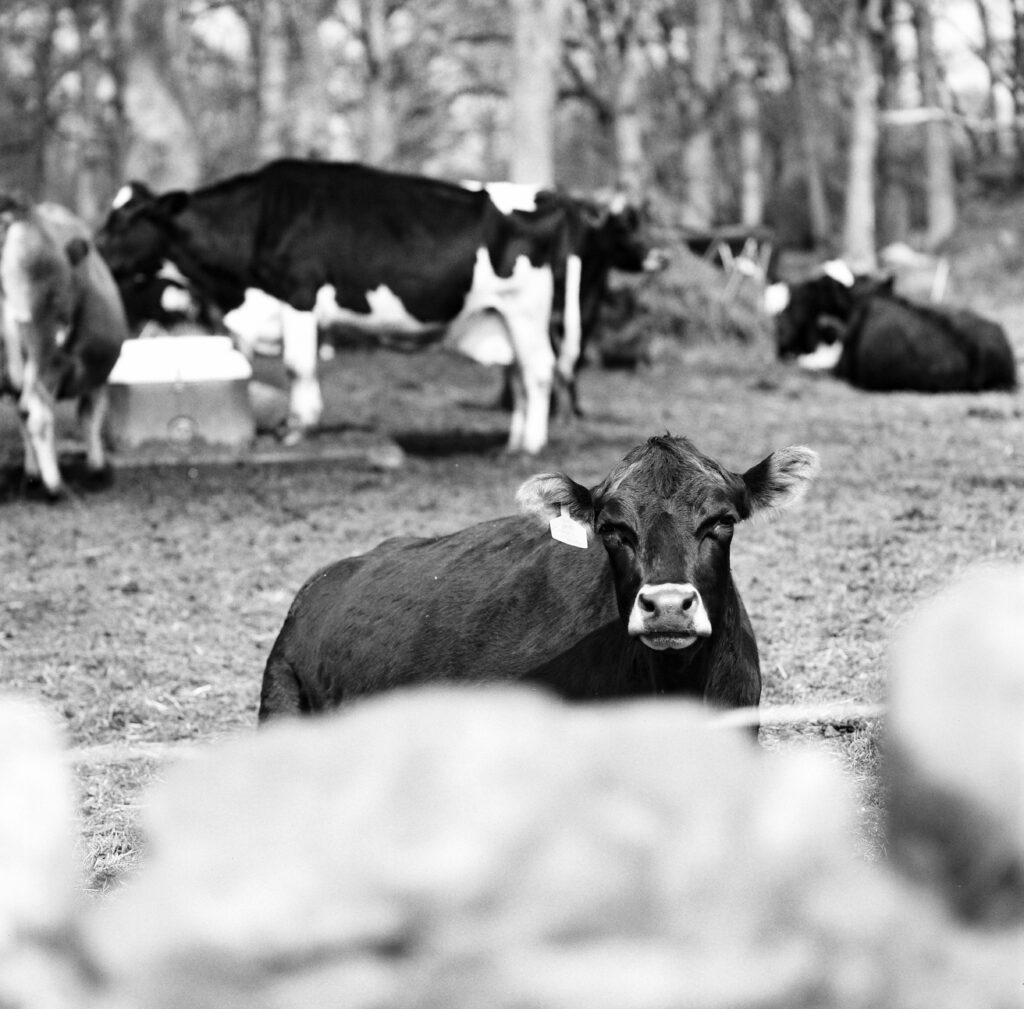
I’ll also credit the environment on that day. The Rockefeller preserve itself has a lot of personality in the winter months, including some very “Tolkien” looking trees.
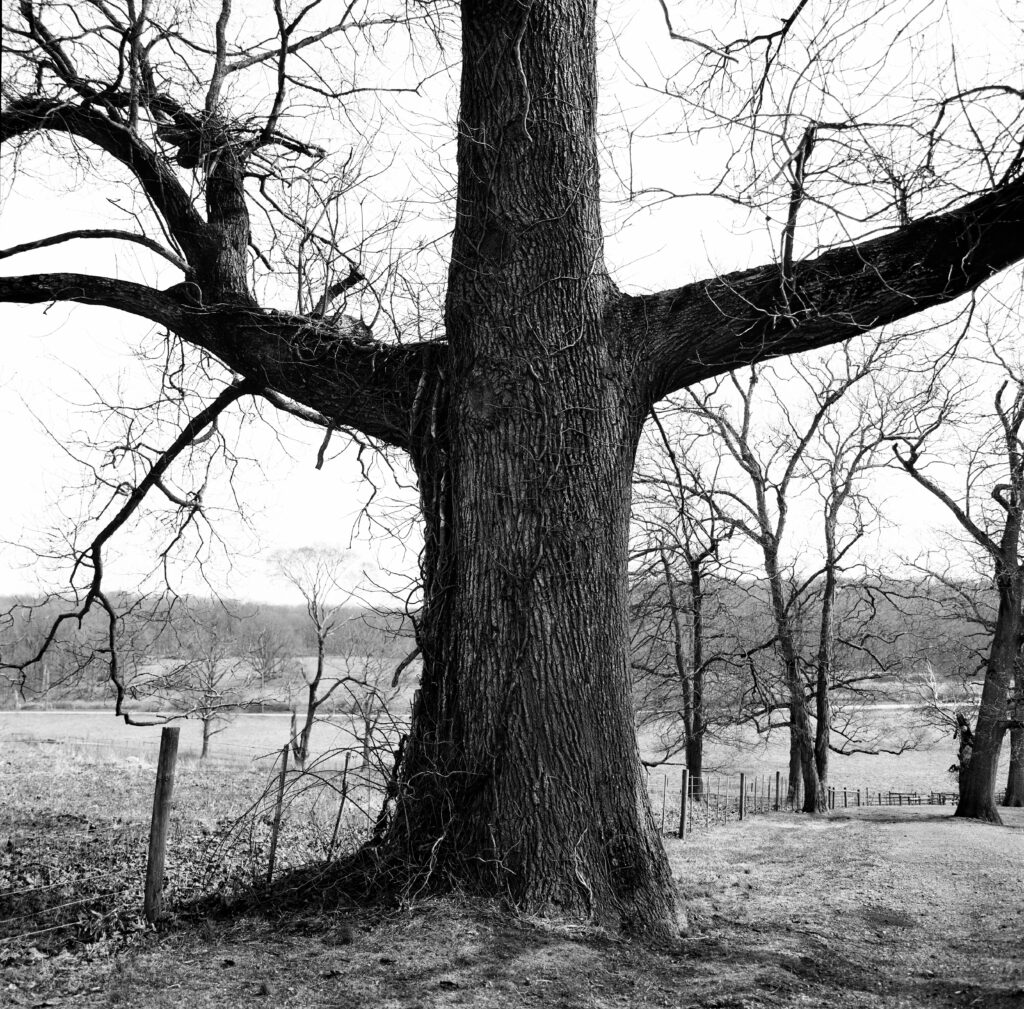
These shots feel like they could have been taken any time between 1925 and 2025, but still with terrific detail.

That’s it for Part 2. I look forward to the ongoing conversation with the 35mmc community to see what you think! And, yes, I hope one day to ‘level up’ to doing my own processing, but in the interim at least I’ve settled on a lab I like (Photo Life, in Brooklyn, which offers very competitive prices and turns around consistent results overnight, if not same day.). Stay tuned for Part 3 next month!
The cover image for this post, a somewhat murky self-portrait reflected on Arnaldo Pomadoro’s GRANDE DISCO 1 at the Donald Kendall Sculpture Garden, was taken on Ilford Delta 400 just as the rain became a little too heavy for the Hasselblad’s viewfinder.
Share this post:

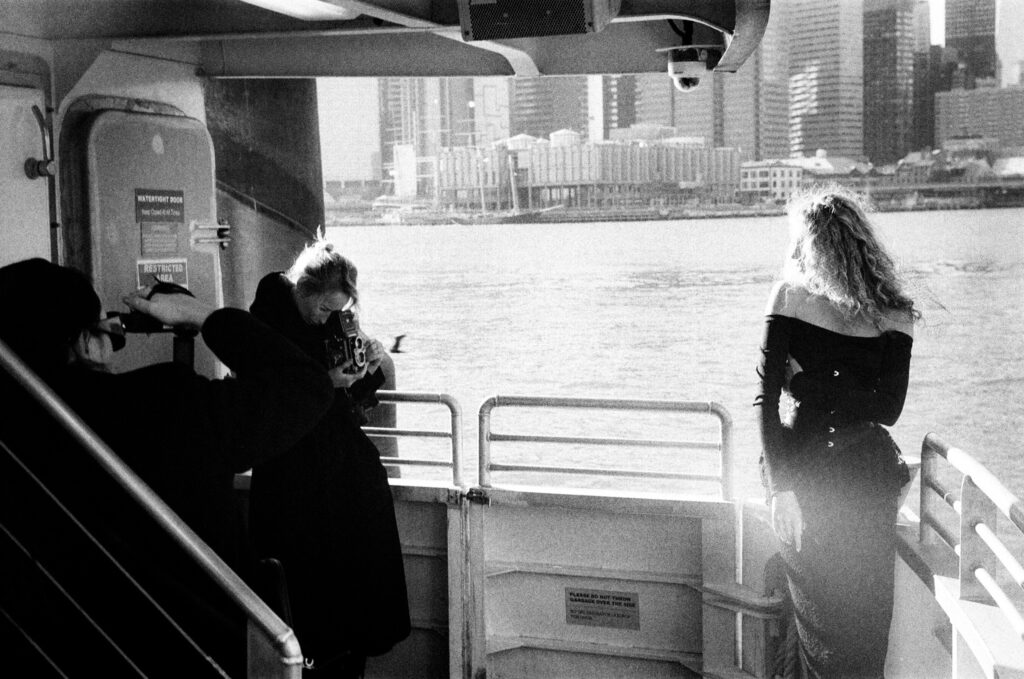
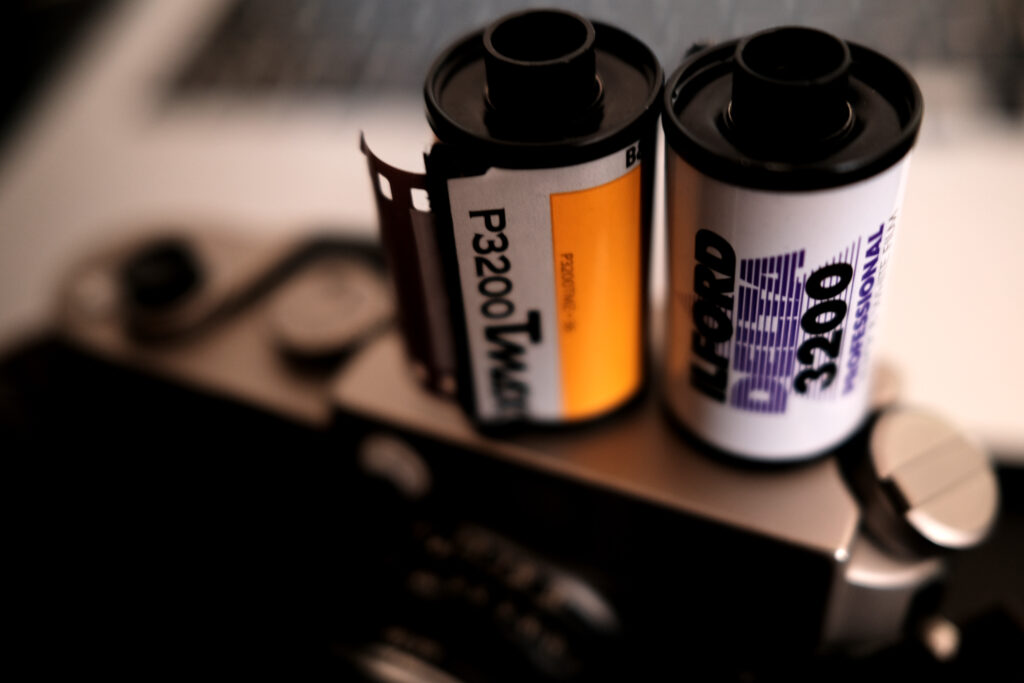
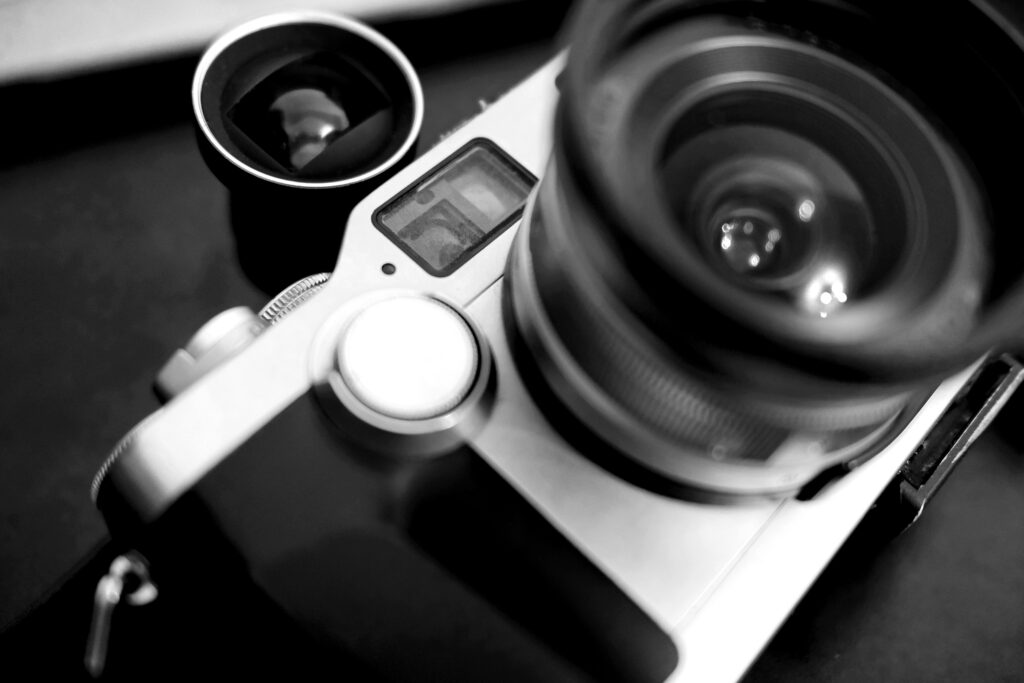
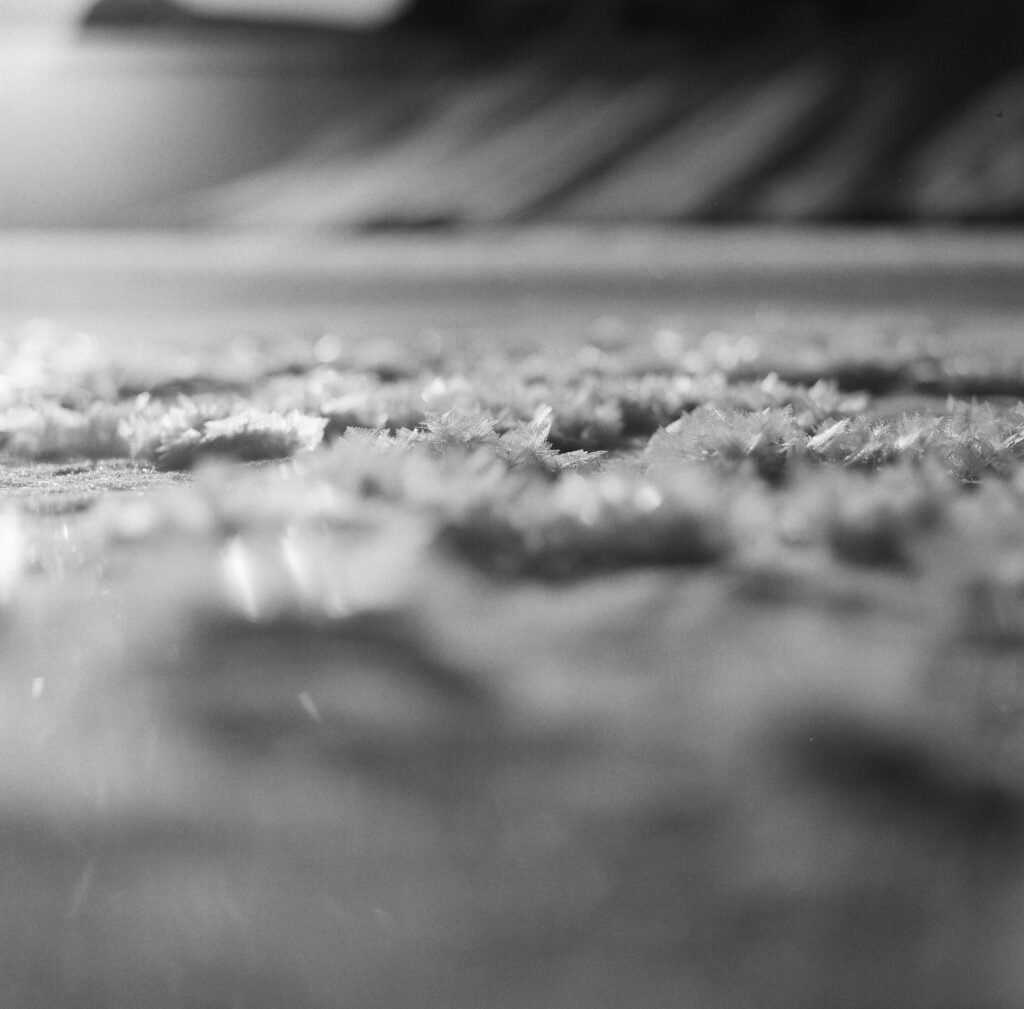
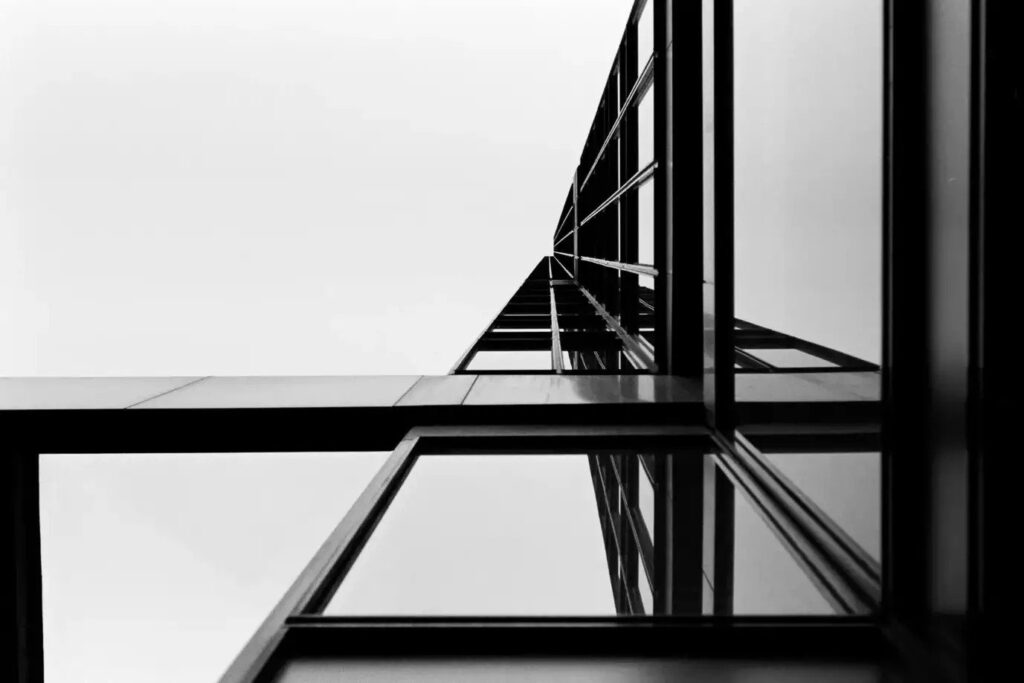
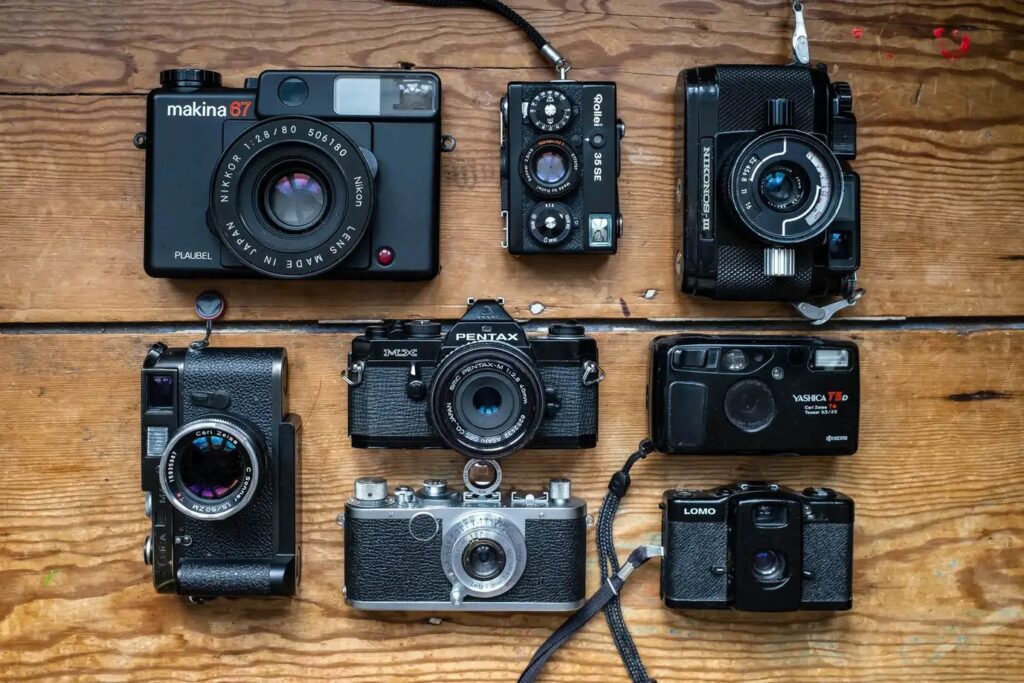
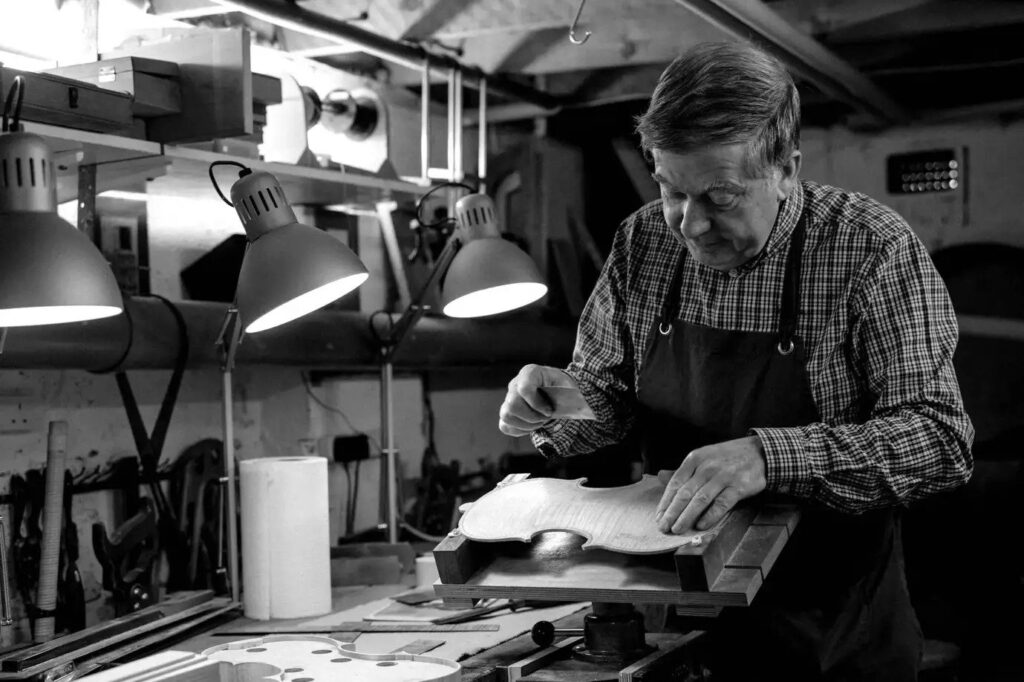
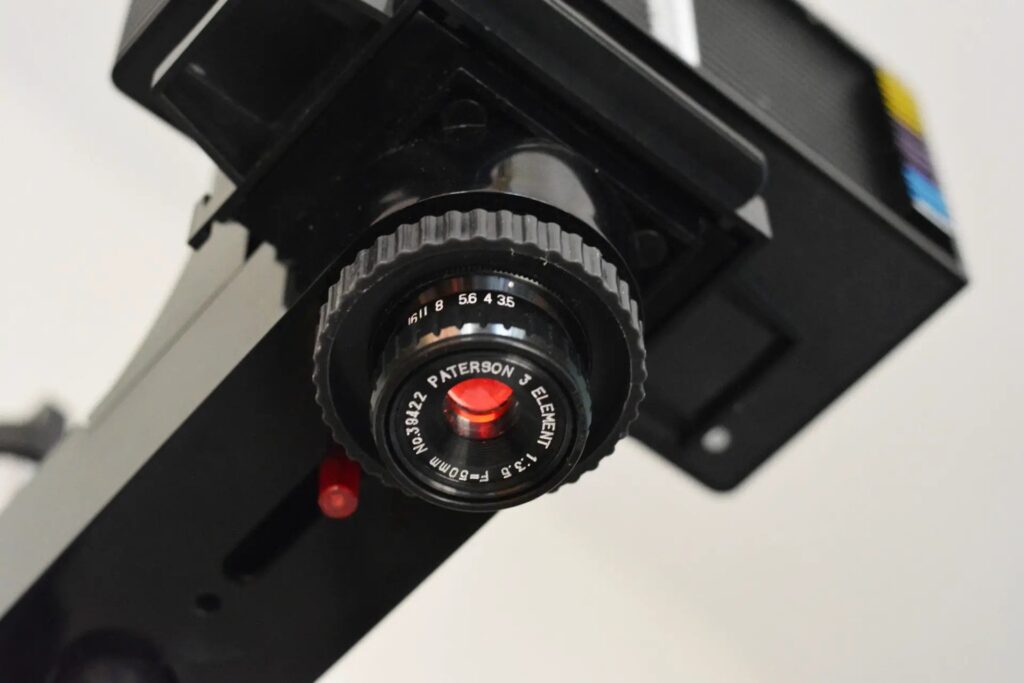
Comments
Ibraar Hussain on A Journey into Darkness and Light, B&W Film Stocks, Part 2
Comment posted: 14/06/2025
It’s amazing how a different stock and speed results in a totally different look and feel -
Knowing this means it’s easier to then decide on a film stock and format for whatever the location, subject, lighting is that day.
I was impressed with Delta 3200, it has a bleak yet moody look
Have you tried Kodak Double X ? That’s very nice indeed
Comment posted: 14/06/2025
Timothy Hancock on A Journey into Darkness and Light, B&W Film Stocks, Part 2
Comment posted: 14/06/2025
Comment posted: 14/06/2025
Keith Drysdale on A Journey into Darkness and Light, B&W Film Stocks, Part 2
Comment posted: 14/06/2025
Comment posted: 14/06/2025
Comment posted: 14/06/2025
Comment posted: 14/06/2025
Art Meripol on A Journey into Darkness and Light, B&W Film Stocks, Part 2
Comment posted: 14/06/2025
Comment posted: 14/06/2025
Jeffery Luhn on A Journey into Darkness and Light, B&W Film Stocks, Part 2
Comment posted: 14/06/2025
You are doing great work in your deep dive into B&W still photography! Maybe you'll do a film in B&W soon? All of the film stocks you're shooting are yielding good results... mostly because of your good eye. I tried Agfa Copex Rapid 50 once and wrote it off as a film with an unpredictable gray scale. Probably because it underexposed greens, which is where I like the best midtones on other stocks. It's good that you're using one dependable lab for processing to get realistic comparisons. I give various film stocks to my college students and they come up with both brilliant and awful results because of processing and printing variations. In that wild context, HP5 in HC-110 1:31 has risen to the top as a combination that performs well even when abused. Please continue your testing, writing, and shooting. I'm really enjoying your posts!
Comment posted: 14/06/2025
Comment posted: 14/06/2025
Comment posted: 14/06/2025
Gary Smith on A Journey into Darkness and Light, B&W Film Stocks, Part 2
Comment posted: 14/06/2025
I was sorry not to see any Fomapan 100 above (as I have 48 sheets of it waiting to go in the soup).
Comment posted: 14/06/2025
Comment posted: 14/06/2025
Comment posted: 14/06/2025
David Hume on A Journey into Darkness and Light, B&W Film Stocks, Part 2
Comment posted: 14/06/2025
I liked your thoughts on the moods of each film too. Very nicely done; sharing the experience of discovery without being proscriptive or preachy.
I did not see part one, but I'll go and have a look. As an aside, I think getting all the processing done by a lab is a good benchmark for this sort of comparison. It does seem that people who get in to this can get a bit, "pulled half a stop and stand-developed in Rodinol 1:18 on the night of a full moon," about it all. The article reminded me of my grandfather, a cinematographer, who'd just bulk-load Plus X (I think it was) because that's what he had. End of story. And then when I went to TAFE and did a photography course we were just given a bunch of HP5 and away we went. "Negative is the Score," and all that.
Cheers, David.
Comment posted: 14/06/2025
Comment posted: 14/06/2025
Comment posted: 14/06/2025
David Pauley on A Journey into Darkness and Light, B&W Film Stocks, Part 2
Comment posted: 15/06/2025
Comment posted: 15/06/2025
Louis A. Sousa on A Journey into Darkness and Light, B&W Film Stocks, Part 2
Comment posted: 15/06/2025
Comment posted: 15/06/2025
Simon Foale on A Journey into Darkness and Light, B&W Film Stocks, Part 2
Comment posted: 15/06/2025
Comment posted: 15/06/2025
James Evidon on A Journey into Darkness and Light, B&W Film Stocks, Part 2
Comment posted: 15/06/2025
Comment posted: 15/06/2025
Comment posted: 15/06/2025
Daniel Castelli on A Journey into Darkness and Light, B&W Film Stocks, Part 2
Comment posted: 19/06/2025
Take a quick trip (if you haven’t done so already) to Storm King in NY. Great place to shoot with different formats. I’m bouncing about an idea to shoot ortho film this summer as a project. Your images on ortho look interesting. Keeping it simple: Nikon F2A, 50mm lens. Just for a change-up. Put the M2 away for a bit.
Comment posted: 19/06/2025